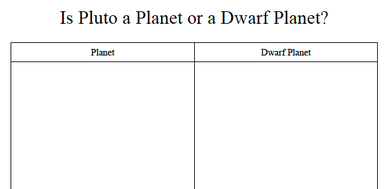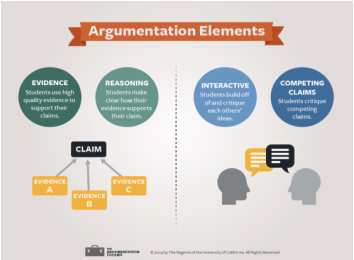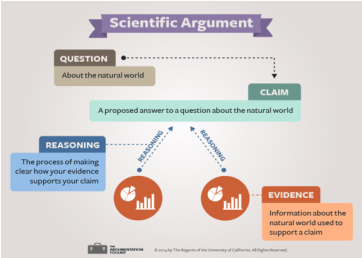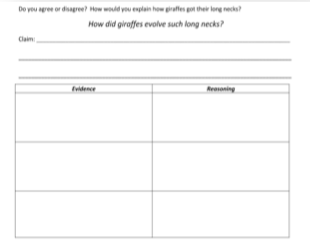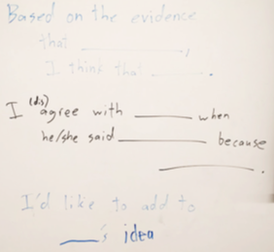Engaging in Argument from Evidence
Goals:
- Engage in scientific argumentation
- Define argumentation, and understand how it differs from other science practices
- *Design a scaffold or tool to use for argumentation in your classroom
Agenda: |
Materials: |
|
|
1. Opening argument: Is Pluto a planet?

The task:
- Target standard: Explain the role of gravity in ocean tides, the orbital motions of planets, their moons, and asteroids in the solar system [8.MS-ESS1-2]
- In pairs or small groups, read each "evidence card" and place it under the claim you think it best supports
https://en.wikipedia.org/wiki/File:PIA19873-
Pluto-NewHorizons-FlyingPastImage-20150714.jpg
Pluto-NewHorizons-FlyingPastImage-20150714.jpg
Discussion Questions:
- Given the evidence, do you think Pluto is a planet or a dwarf planet?
- Did you have trouble picking which claim a card supported?
- How might you support students who are experiencing challenges with this task?
- Why is argumentation an important skill for scientists and students?
2. Defining "Engaging in argument from evidence" - What is it? What is it NOT?
From the recently revised MA standards:
How is argumentation similar to and/or different from explanation?
- Argumentation is a process for reaching agreements about explanations and design solutions. In science, reasoning and argument based on evidence are essential in identifying the best explanation for a natural phenomenon…Student engagement in scientific argumentation is critical if students are to understand the culture in which scientists live, and how to apply science and engineering for the benefit of society. As such, argument is a process based on evidence and reasoning that leads to explanations acceptable by the scientific community and design solutions acceptable by the engineering community.
- Argument in science goes beyond reaching agreements in explanations and design solutions. Whether investigating a phenomenon, testing a design, or constructing a model to provide a mechanism for an explanation, students are expected to use argumentation to listen to, compare, and evaluate competing ideas and methods based on their merits. Scientists and engineers engage in argumentation when investigating a phenomenon, testing a design solution, resolving questions about measurements, building data models, and using evidence to evaluate claims.
How is argumentation similar to and/or different from explanation?
Engaging in argument from evidence |
Constructing explanations |
|
|
3. Argumentation Toolkit Video
Watch the Argumentation Toolkit Overview video, which provides an introduction to this science practice.
4. BPS Video Examples & Debrief
As you watch the following videos, keep in mind these questions:
Middle School Example:
Students in this class were debating the following explanations:
- Are students pointing out evidence by referring to data?
- Are students building on or disagreeing with each other’s ideas?
- Are students using scaffolding to form their arguments?
- Are students engaging in arguing from evidence without “arguing”?
Middle School Example:
Students in this class were debating the following explanations:
- Josie says that giraffes evolved their long necks by stretching them over their lifetime and passing on longer necks to their offspring.
- Jessie says that giraffes have different length necks, but those with shorter necks died before they could pass them on.
Kindergarten Example:
Students in this class were learning about the words "technology" and "engineering." In this example, students were debating whether if a table and a chair could be considered technology. Students were previously told that technology is something designed to solve a problem and make lives easier.
Students in this class were learning about the words "technology" and "engineering." In this example, students were debating whether if a table and a chair could be considered technology. Students were previously told that technology is something designed to solve a problem and make lives easier.
Debrief of Videos:
- What did you notice in these videos?
- Were students pointing out evidence by referring to data?
- Were students building on or disagreeing with each other’s ideas?
- Were students using scaffolding to form their arguments?
- Were students engaging in arguing from evidence without “arguing”?
*Extension Activity - Creating & Sharing Classroom Tools
The task:
- Either independently, or in groups: create a tool to use in your classroom to facilitate argumentation among students. Example tools might include: an anchor chart, a slideshow for students (i.e. a PowerPoint), or a graphic organizer
- In a future meeting, share this tool with other teachers for feedback
Additional Resources
If you want to learn more about "engaging in argument from evidence" check out:
© 2016 Boston Public Schools Science Department
